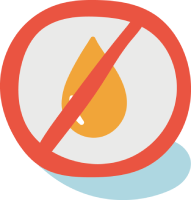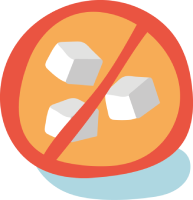- VE
- VN
- LC
- LF
- LS

OnlineCook
April 29, 2025
Homemade pita bread is much easier than one would think! Try this recipe and enjoy fresh pita straight from the oven.
7 Ingredients


From the Cook
1/2
Homemade Pita Bread
Instructions
1
|
Place the warm water, yeast, sugar, and olive oil in a large mixing bowl. Stir to combine.
2
|
Add the flour and salt to the water mixture. Use a wooden spoon to mix until all the flour is hydrated and a ragged dough forms. Turn the dough onto a lightly floured surface. Knead until the dough is very smooth and elastic, 8-10 minutes.
3
|
Form the dough into a ball and place it in a lightly oiled mixing bowl. Cover the bowl tightly with plastic wrap, and set in a warm place to rest. Allow the dough to rise for 2 hours, or until doubled in volume.
4
|
Once the dough has risen, place a baking stone or two large baking sheets in the oven. Preheat the oven to 450°F.
5
|
Cut the dough into 8 equal portions. On a lightly floured surface, gently roll 1 dough portion into a thin 6-inch circle, about 1/8-inch thick. Place the finished circle on a baking sheet and cover with a damp towel while you repeat with the remaining dough.
6
|
Quickly open the oven door and transfer the dough circles directly onto the hot baking stone or sheets, spacing them roughly 2 inches apart. Bake the pita for 5 minutes.
7
|
Open the oven door and swiftly flip the rounds. Continue baking until the pita are puffed with a few golden spots, 2-3 minutes.
8
|
Check to see that pita bread is done. Remove from oven or add time as needed.
9
|
Allow the pita to cool for 15-20 minutes before serving. Leftover pita bread can be kept in an airtight container for up to 3 days, or frozen for 3 months.
Percent Daily Values are based on a 2,000 calorie diet. Your daily values may be higher or lower depending on your calorie needs.
Review & Earn
Be the first to review this recipe and earn a 20% Bonus
Level up & unlock free Premium by reviewing recipes!
My Notes
Your kitchen notebook is waiting.
Whether it's a recipe tweak or an inspiration burst — jot it down here.
Tips & Tricks (5)
- Yeast Activation Magic 🧪Use water between 100-110°F to activate the yeast perfectly - too hot will kill it, too cold won't wake it up.
- Dough Resting Technique 🕰️Allow the dough to rise in a warm, draft-free area and cover with a damp cloth to prevent surface drying and create the perfect soft texture.
- Pocket-Perfect Rolling 🥯Roll pitas to an even 1/4-inch thickness and let them rest for 10 minutes before baking to ensure maximum pocket formation.
- High Heat Baking Secret 🔥Preheat your baking stone or inverted baking sheet to 500°F to create instant steam and achieve those signature pita bread pockets.
- Storage Pro Tip 🍞Store freshly cooled pitas in a sealed plastic bag with a slightly damp paper towel to maintain softness and prevent drying out.
Intelligent Tags
Recipe Facts
Diet at a Glance
 Vegetarian
Vegetarian
 Vegan
Vegan
 Low-Cholesterol
Low-Cholesterol
 Low Fat
Low Fat
 Low Sugar
Low Sugar
Smart Nutrition 
Nutrition Per Serving
No Recipes Available
EXPLORE
Looking for more?
Use our smart searchtool, explore by category, or browse your customized food feed.






































